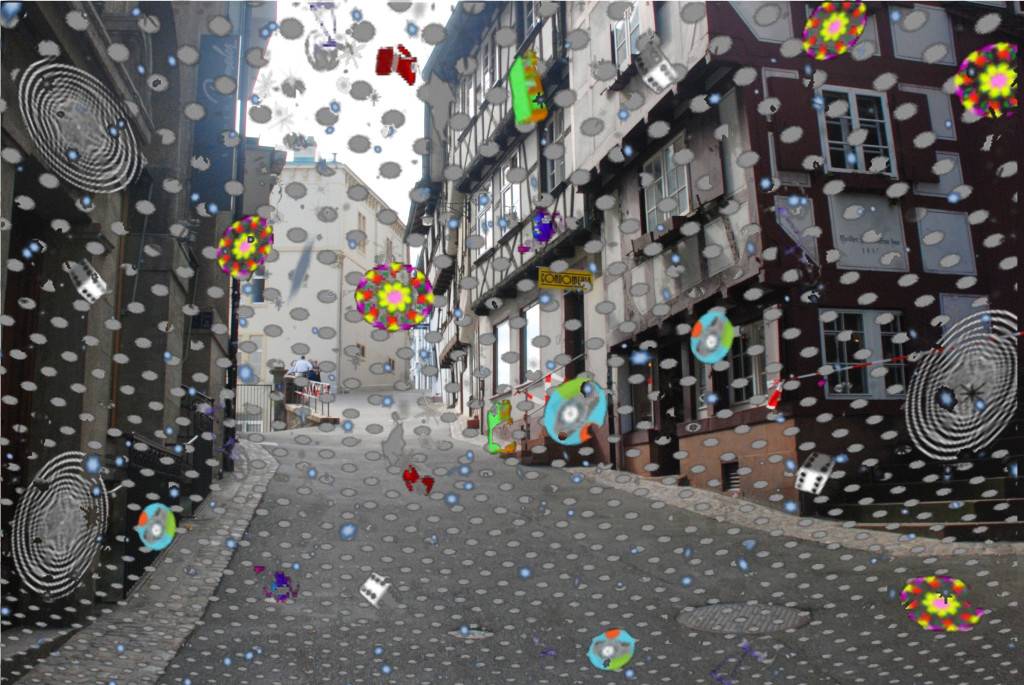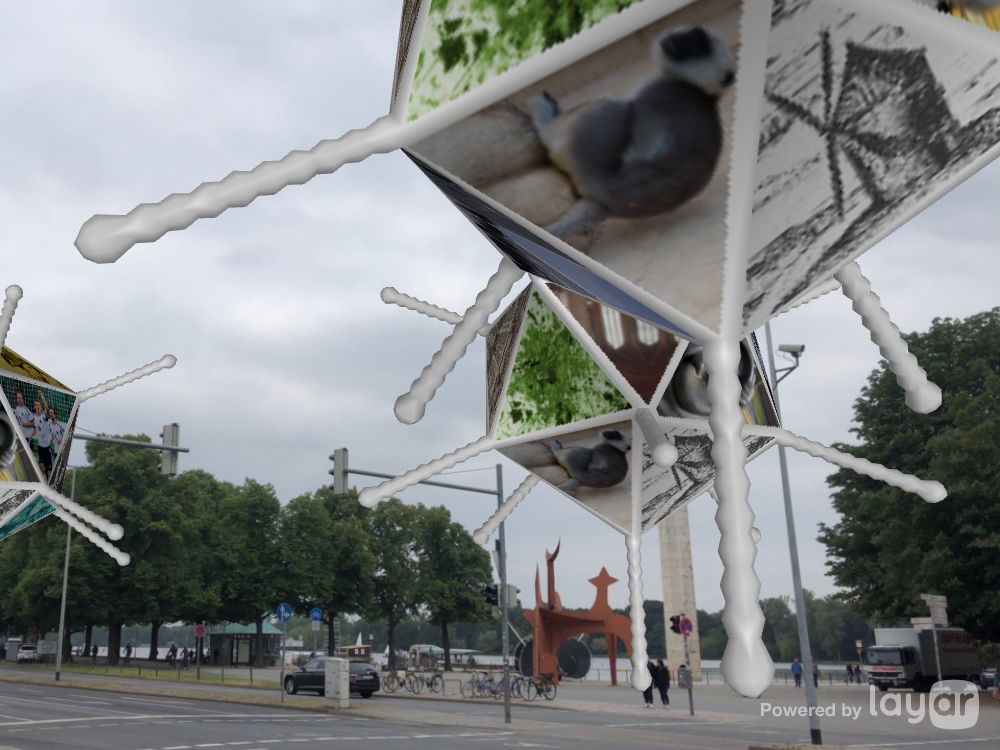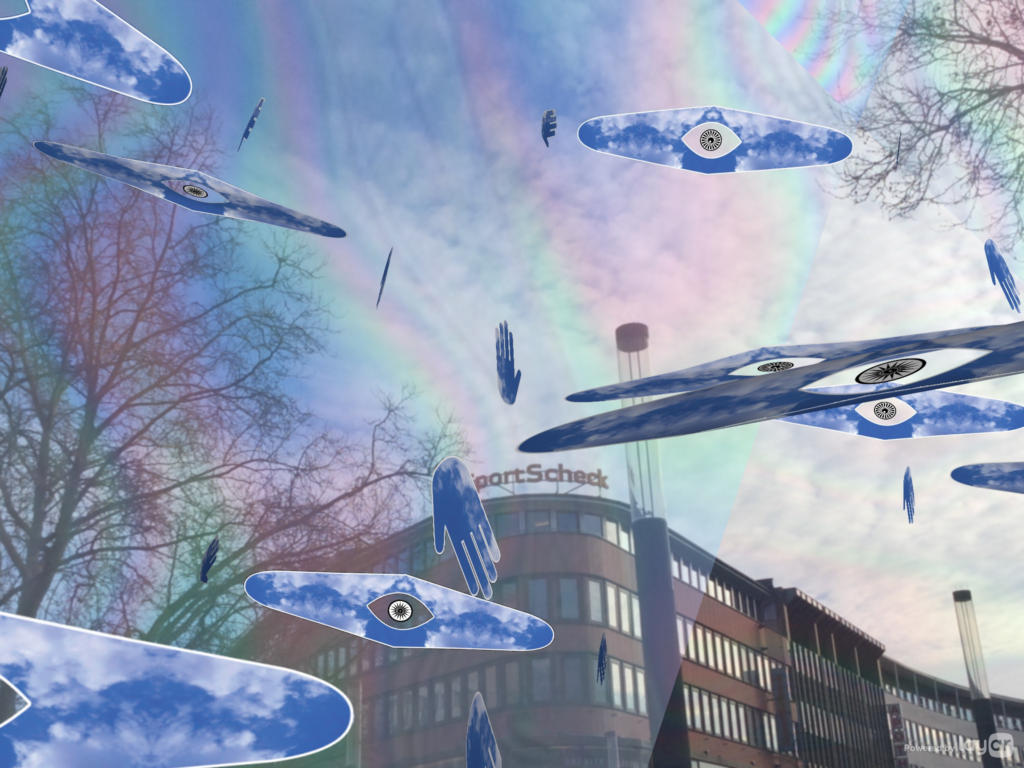Scenario 5
Perceiving and Preserving Colors in Born Digital Artworks
Born Digital Art refers to artworks that are created exclusively using digital technologies and exist primarily in digital formats. Unlike traditional artworks that might be digitized after creation, born digital artworks originate in the digital realm and are intended to be experienced via digital platforms. These artworks leverage technologies such as digital imaging, 3D modeling, computer graphics, software programming, and more. The nature of born digital art allows for dynamic interactions and can often be manipulated or experienced in ways that physical art cannot. This type of art is particularly prevalent in fields such as digital installation, virtual reality, augmented reality, and interactive web-based art.
Conservation
Conserving born digital art poses unique challenges due to the rapid pace of technological change and the dependency on specific technologies. Issues such as technological obsolescence, digital decay, and the reliance on software or platforms that may become outdated necessitate proactive conservation strategies like digital preservation and migration to new formats. Additionally, the perfect reproducibility of digital files raises questions about authenticity and originality, complicating the valuation and conservation efforts. Museums and conservators must also navigate legal and ethical considerations around copyright and the unconventional use of software and hardware. Effective storage and archiving are critical, requiring robust systems to ensure the integrity and accessibility of digital artworks over time.
To be able to make a comparitive anyalsis between the migration of the case study artworks with a artwork “born” into the latest technologies, the scenario includes a premier artwork titled “The Space Art Gallery” which will be realised alonst side the migration of the older works into the the latest technologies.
Case Studies
The PERCEIVE project highlights case studies from a collection of artworks stemming from the pioneer time for AR artworks for public space. These include the following works:

John Craig Freeman (2012)
Orators and Propaganda Stands
“Orators” is an Augmented Reality artwork created by John Craig Freeman. The piece explores themes of public speech and democracy by allowing viewers to witness virtual orators delivering speeches in various public spaces when viewed through a mobile device or AR headset. The artwork blurs the lines between physical and virtual realities, inviting viewers to reflect on the role of technology in shaping public discourse.
Notable features: Virtual orators delivering speeches in public spaces, blurring of physical and virtual realities.

Will Pappenheimer (2011 – 2014)
Dose
Dose is an Augmented Reality artwork developed by Will Pappenheimer in collaboration with the virtual pharmaceutics brand Virta-Flaneurazine. Conceived as a “designer digital drug,” the piece immerses viewers in a hypnotic, hallucinatory environment of swirling stars and flowing objects when accessed via a mobile device. Originally presented in urban settings and later at cultural institutions such as the EPFL Rolex Learning Center in Lausanne, the work metaphorically explores the effects of virtual “dosing” as a stimulant for the imagination, learning, and collective experience.
Notable features: Interactive AR pill that releases hypnotic streams of stars and objects; site-specific deployments in markets, museums, and public spaces; commentary on the intersection of pharmaceuticals, digital technology, and altered states of perception

Warren Armstrong (2011)
Information Virus
Information Virus is an augmented reality work by Australian artist Warren Armstrong. The piece uses a repurposed commercial 3D model of an adenovirus, whose surface is continuously overlaid with randomly selected public-domain images (e.g., from Wikimedia Commons). The viral structure appears in real urban spaces—such as in front of the National Gallery of Victoria—and metaphorically symbolizes the rapid, fragmented flows of information on the internet.
Notable features: The work presents a viral 3D model (adenovirus) in augmented reality, whose surface is covered with constantly shifting public-domain images. Through site-specific projections in public space—such as in front of the museum building in Melbourne—it comments on the flood of information and the question of how digital content “infects” us, both in a negative and a positive sense (The Melbourne Connoisseur).

Arthur Clay (2014)
The Coming of a new dimension
The Coming of a New Dimension is an augmented reality work by Arthur Clay, inspired by Kurt Vonnegut’s fictional Tralfamadorians from Slaughterhouse-Five and The Sirens of Titan. These beings perceive reality in four dimensions, granting them equal access to past, present, and future. In collaboration with Virtuale Switzerland, Clay translates this visionary idea into an artistic AR installation centered on a “time capsule.” Rotating on a 360-degree axis, the capsule creates an immersive transition from day to night. Visitors entering the capsule through their smartphones experience an extraordinary AR journey in which flying objects oscillate between near and distant spaces. The work blends literary inspiration with technological innovation, inviting audiences to sensually engage with time and space as new dimensions.
Notable features: The piece uses a rotating “time capsule” as its visual and conceptual core. By combining AR elements, day–night transitions, and flying objects, it offers the audience an immersive reflection on past, present, and future.

Lily & Honglei (2014)
Crystal Coffin
Crystal Coffin is an AR artwork created by the Chinese artist duo Lily & Honglei. It is a walk-in pavilion featuring a 3D model of Mao’s crystal coffin, situated within a traditional Chinese-styled pavilion with a sky roof. The artwork prompts viewers to contemplate the symbolism of Mao’s crystal coffin in a traditional Chinese architectural setting, raising questions about history, modernity, and authoritarianism.
Notable features: 3D model of Mao’s crystal coffin, traditional Chinese architectural setting, symbolism of authoritarianism.

Arthur Clay & Ingo Lie (2017)
Ecce Homo
“Ecce Homo” is an AR artwork realized by Virtuale Switzerland for the artist Ingo Lie. It features the artist’s self-portrait divided into eight cubes arranged in a three-dimensional cross, floating above church ruins. The artwork explores themes of interconnectedness and self-perception in the digital age, symbolized by the geometric fragmentation into a cruciform shape.
Notable features: Artist’s self-portrait divided into cubes, three-dimensional cross, exploration of digital age themes.

Arthur Clay (2024)
Space Art Gallery
Throughout history, artists have collaborated with space agencies to place artworks in space, whether as messages to extraterrestrial life or as part of celestial exhibitions. Iconic examples include the “Moon Museum” on the lunar surface and Trevor Paglen’s “Orbital Reflector” orbiting Earth as space junk. “Space Art Gallery” pays homage to these endeavors while avoiding the creation of additional space debris by presenting artworks in a virtual zero gravity space using modern VR/AR technologies.The Space Art Gallery embodies this concept by synthesizing elements from past space artworks and reimagining them in a virtual space environment. Through AR and VR, viewers can explore a galaxy-like gallery populated by constellations of zero gravity artworks, blending vintage pieces with contemporary creations. As viewers navigate through this synthetic space, they experience a surreal journey akin to a science fiction adventure, transcending time and encountering a diverse array of space-inspired art.
Notable features: Virtual space gallery, exploration of zero gravity art, blend of vintage and contemporary artworks.
